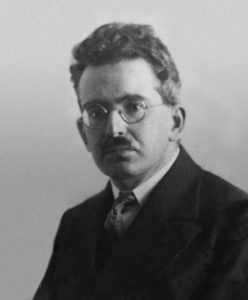
Upon initial examination, analysis—something anthropologists strive to achieve—may appear distinct from storytelling. For example, the latter is geared towards eliciting emotions, while the former exudes an aura of detachment and indifference–or as Geertz (1988, 2) describes the common understanding of ethnography, “Good anthropological texts are plain texts, unpretending”.
Yet, upon closer inspection, an affinity between stories and analyses becomes apparent. Drawing on her insights from a course led by Renato Rosaldo at Stanford, Kirin Narayan (2012, 8) contends that stories possess inherent analytical qualities, and within the sequence of reasoning, analysis takes on a narrative structure. Consequently, it is hardly surprising that ethnographers, despite the deeply analytical nature of their accounts, employ narrative forms and methods that storytellers have long embraced in their craft.
Stories rely on experience as their source. Storyteller is a craftsperson who draws on “the raw material of experience, […their] own and that of others, in a solid, useful, and unique way” (Benjamin 2007[1936], 108). Benjamin argues that experience, though, has fallen in value, while information that “lays claim to prompt verifiability” (Benjamin, 2007[1936], 89) has gained value. Similar to stories’ reliance on experience, the ethnographer’s experience in the field is the basis of ethnographic analysis. Sharing the personal experience with an interested audience is common between ethnographic accounts and stories. However, Renato Rosaldo (1989, 60) argues that “although personal narratives often appear in ethnographies written in the classic mode, they usually have been relegated quite literally to the margins: prefaces, introductions, afterwards, footnotes, and italicized or small-print case histories.” Similarly, when anthropologists see “commonalities between their own work and that of artists and literary writers,” they often choose to reestablish the line between the two genres and the truths each of the two draws on (McLean 2017, 45) through attempting “to find a basis for distinguishing them” (McLean 2017, 47).
Questioning the basis for distinguishing the two, more recent forms of ethnographic representation, however, have more openly embraced narrative forms of storytelling and experimented with engaging means that in the past may have been considered ‘unscientific’ or insufficient for a claim to represent reality. Allowing ethnographers more creatively capture the essence of their experiences, these experimentations help researchers share experiences that cannot readily be explored in classic forms of ethnographic accounts due to academic constraints (Musharbash and Gershon 2023, 17).
In the next sections, I introduce a few genres that you may find interesting to experiment with when it comes to representing the findings of your ethnographic research.
Work Cited
- Benjamin, Walter. 2007[1936]. “The Storyteller: Reflections on the Works of Nikolai Leskov.” In Illuminations: Essays and Reflections. New York: Schocken Books. 83-109.
- Geertz, Clifford. 1988. Works and Lives: The Anthropologist as Author. Stanford, CA: Stanford University Press.
- McLean, Stuart. 2017. Fictionalizing Anthropology: Encounters and Fabulations at the Edges of the Human. Minneapolis: University of Minnesota Press.
- Musharbash, Yasmine and Gershon, Ilana. 2023. “Introduction: Here Be Monsters” In: Living with Monsters: Ethnographic Fiction about Real Monsters. Goleta, CA: Punctum Books. 15-29.
- Narayan, Kirin. 1999. “Ethnography and Fiction: Where is the Border?” Anthropology and Humanism 24 (2): 134-147.
- Narayan, Kirin. 2012. Alive in Writing: Crafting Ethnography in the Company of Chekhov. Chicago, IL: University of Chicago Press.
- Rosaldo, Renato. 1989. Culture and Truth: The Remaking of Social Analysis. Boston: Beacon Press.